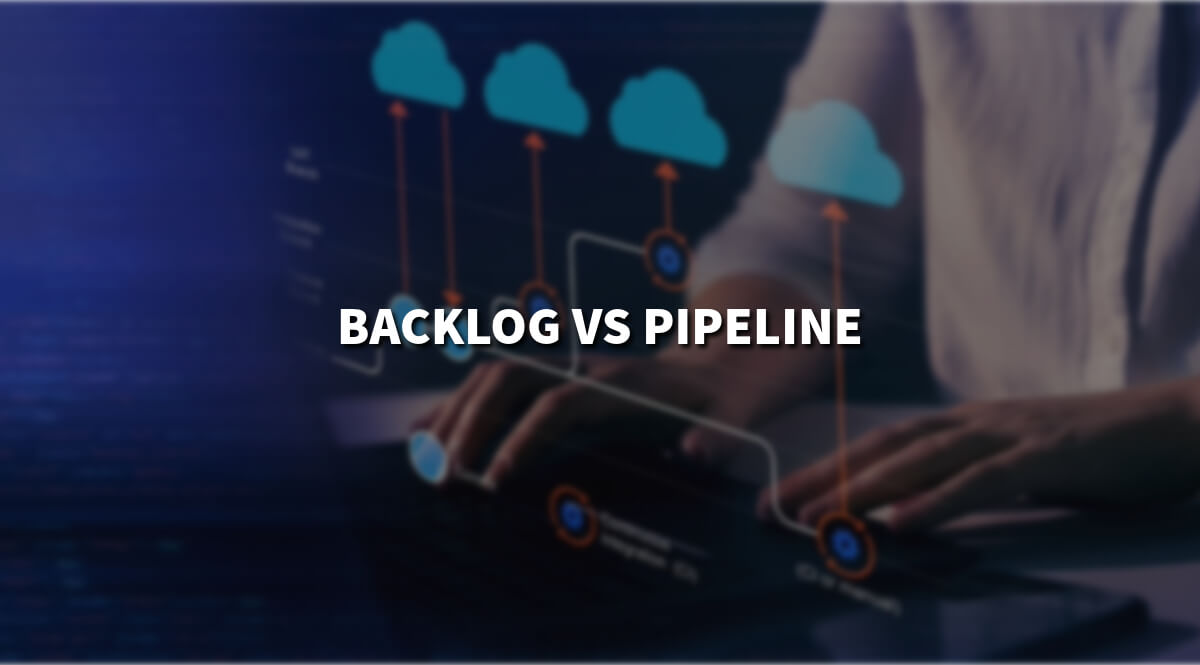Backlog vs Pipeline – Optimizing Your Sales Workflow
Are you ready to take your sales workflow to the next level of efficiency? Let’s delve into the world of sales backlog and sales pipeline, and discover why comparing them is a game-changer for your business.
But first, let’s get a clear understanding of these terms! Optimizing each aspect may be challenging, but it’s easy if you understand the process and concepts.
Let’s start with learning what the sales pipeline represents, shall we?
What is the sales pipeline exactly?
A sales pipeline represents a system many companies and organizations use worldwide to track how customers move through the sales process.
First contact is when you reach out to a potential customer to comprehend their needs and issues. This is typically done through calls or meetings.
Usually, managers are those who employ this system to gauge how many prospects convert into paying customers. However, businesses that only depend on their current customers may make less money as markets become full.
All at once, sales representatives use the pipeline to determine the current phase of their leads. They also utilize it to formulate tactics to advance them to the subsequent stage.
Why is the sales pipeline so important?
The sales pipeline is not just a tool; it’s a lifeline for your business. Understanding its importance is key to managing your sales time and resources effectively.
Remember, successful businesses thrive on new customers, not just existing ones. However, companies that only depend on their current customers may experience a decrease in revenue as markets become saturated.
This crucial information helps focus targeting efforts on promising leads for better results. The information helps focus targeting efforts on promising leads for better results.
For that reason, businesses need to attract new customers to avoid stagnation or decline. The worst thing that can happen to a company is when it stops growing or starts losing business. This can, without a doubt, lead to failure in the market.
Defining the Sales Cycle
A sales cycle is the step-by-step process sales professionals follow to turn a potential customer into an actual customer.
Marketing teams set sales targets and implement a sales cycle to achieve these long-term goals. This method helps them know what to do next and track where each potential customer is.
Understanding the Sales Pipeline
Having the valuable insight that only some leads convert into customers is crucial. The primary goal of the sales pipeline is to help salespeople find leads with the highest chance of becoming customers.
This helpful information suggests that efforts can better focus on a particular group of potential customers.
What are the top seven stages of a Sales Pipeline?
A sales pipeline usually consists of seven stages that guide a prospect through the sales process. It assists sales teams to drive revenue and enhance customer relationships efficiently.
Here are these several stages of the pipeline you need to keep in mind:
Lead Generation: The first step is finding potential customers through content marketing, social media, and paid ads.Lead Qualification: Sales reps determine if a prospect meets the requirements to become a qualified lead.
Sales representatives find potential clients by researching and contacting them in the following manners: phone, email, or social media. They are looking for individuals interested in the business’s products or services.
Lead Qualification: Sales reps assess whether a prospect meets the necessary criteria (needs, budget, authority, timeline) to become a qualified lead.
Initial Contact: The first interaction with the prospect is to learn more about their requirements and challenges, often through calls or meetings.
Proposal: Sales reps present a customized proposal highlighting how the product or service can solve the prospect’s issues.
Negotiation and Closing: Sales reps negotiate terms and close the deal once both parties agree.
Follow-up: Ongoing communication with the customer to ensure satisfaction and explore further sales opportunities.
Now, let’s know all about the sales backlog before making their comparison, shall we?
What is sales backlog?
Sales backlog happens once orders a certain company has taken exceed what has been completed.
It’s crucial to note that it is prevalent in growing businesses and often reflects high product demand.
Nonetheless, backlogs can also arise from the following two reasons:
Production issues
Supply chain disruptions.
Keeping your sales backlog in check is not just about managing demand; it’s about avoiding potential operational bottlenecks that can lead to dissatisfied customers and lost sales.
So, it’s crucial to monitor and manage your backlog effectively.
What is the backlog’s assessing Impact?
Suppose a company processes 100 orders weekly to fully assess its impact. Keep in mind that if demand rises, weekly orders could increase to 110, potentially leading to a backlog if the company’s capacity remains unchanged.
With the propper reduction efficiency to 90 orders per week usually results in a similar backlog, indicating potential operational challenges.
How to calculate the backlog most effectively?
The standard formula for calculating maintenance backlog is to divide the Total Amount of Orders in Backlog (as of the measurement day) by the Total Amount of Sales.
Now, let’s have a look at their comparison, shall we?
Conclusion: Sales backlog vs pipeline comparison
To sum up, we’d like to compare sales backlog vs pipeline. As mentioned above, a sales backlog represents a collection of orders or user stories awaiting work commencement.
It serves as a reservoir from which teams draw their next tasks once current activities are completed. Effective management of a sales backlog includes prioritizing these tasks to ensure that subsequent efforts are both important and valuable.
In contrast, a pipeline generally refers to the processes involved in building and delivering software or services.
This starts once the code is entered into version control, initiating a series of actions within the pipeline.
The code is checked on a server, tested, and then deployed for testing. It goes through different tests before being deployed to production or getting ready for deployment.
The post Backlog vs Pipeline – Optimizing Your Sales Workflow appeared first on FinanceBrokerage.
































